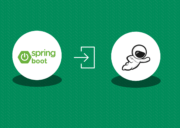
If you’re reading this and not wearing in pants, it’s entirely likely you’re working from home. Well, we hope for the sake of your team that you’re not sitting in the office. Whether you work from home one day a week and the rest in an office or are part of an entirely remote team, you’re part of the massive shift occurring in where we work. There will be many in future generations who will never experience a 9 to 5 in-office workday, instead of working from home, a coworking space or cafe. It’s a popular topic at Codemotion conferences, according to a 2017 Stack Overflow survey, 53 percent of developers surveyed reported that the ability to work remotely was a priority during a job search.
Remote work (I’ll use the term to encompass any work that is done outside of a company office, typically at home for the sake of this article) removes the need for the daily commute. Your office is as quiet as your choice of music, unlike shared space where as Alex Warren, Engineering Manager at AlphaSights asserts, “There’s always someone who’s got a mechanical keyboard.” Remote work also offers great flexibility for people with kids, as well as those who like to travel. It’s also a great option for startups who save on the cost of office overheads.
A work from home experiment facilitated by Stanford University found that work-from-home employees work a true full-shift (or more) versus being late or leaving early and found it easier to concentrate at home. The study also found that employee attrition decreased by 50 percent with shorter breaks, had fewer sick days, and took less time off. Remote workers also typically return to work faster after surgery or recovering from medical issues.
There are downsides to working in your pajamas
However remote work is not just raiding the fridge or sitting at beachside cafes. You need to have a lot of self-discipline to ensure that you stay focused and work is actually completed. Alexandra Marin, a software developer at crossplatform.io believes you need to have the right personality for remote work. As Alexandra notes: ” I’m either the type of person that draws your energy from being with people are you easily distracted? Can you work without guidance?”
Alexandra believes that the issue of time management vs productiveness is often misunderstood. This is enforced in Buffer’s latest State of Remote Work survey which reveals that splitting a team between remote and office-based can be a cause of conflict. Alexandra shared:
“The problem is is that we’re measuring and managing time rather than being productive this is how you get in in all kinds of situations like for example, if you are working in an office, you’re always trying to appear busy. You’d love to go home early when you finish a task but immediately when you finish that task there’s a full backlog.
I think we should make changes in how we reward work finishing a task faster should reward me with some time off not more tasks from the backlog.”
Loneliness is hard and communication harder
Remote work can be lonely: Warren and Alexandra have both raised the issue of loneliness and remote work, noting the benefits of coworking, meetups, slack channels, scheduled lunches with other remote workers.

Euan Findlay, Integration Engineer at the Financial Times shared some unforeseen challenges to remote work when work is spread across time zones and multiple shifts:
“I now had the challenge of a seven-hour time zone difference between London and Manila and because we work 24/7 as a busy, we may only have a small number of the team working at any given time. I was really used to being able to quickly get feedback or agreement from everyone I didn’t want people to feel excluded from these decisions but equally, I didn’t want to have to send an email to the whole team and then wait three days for people to read it and then respond.”
All speakers were hyper-aware of the challenge of communication without face to face interaction. As Euan notes: ” We lose a lot of expression from people’s body language and in practice, only one person can really talk at a time.”
Further, text can really struggle to portray intent and emotion:
“Someone may find a short direct sentence to be quite rude… On the other hand, if you’re more like me and you sprinkle a liberal use of emoji into your every slack message that can come across to some people as unprofessional or flippant depending on the circumstance.”
Good practices to make remote work work
- Be clear on what distracts you and how to handle it: this could include locking yourself out of social media during work hours or structuring your time with resources such as the Pomodoro app.
- Schedule regular collaboration opportunities such as remote pairing with team members
- Plan interesting digital events such as collaborative hackathons, live-streamed tech talks/workshops, and collaborative hackathons
- Focus on remote-first. Warren shared the value of remote-first communication through the use of aSynchronous (remote, documented) communication through collaborative docs.
- Collaborative documentation means information is available remotely, whether it’s part of a meeting or the result of a slack discussion and is a way to “Drown out the incessant chatter of colleagues collaborating”
Actively strive to make your remote team more inclusive:
- Add a social channel to slack so people can connect about their interests
- Use Donut for coffee roulette so team members can hang out via video call and get to know each other over a coffee
- Remote dev bash – as Alex shared “sometimes we’d drink a beer on google hangouts and people would just hang out, sometimes we would play computer games”
- Schedule time for staff to meet face to face as practical
Tools for remote work
There’s an abundance of software options to help remote teams. These include:
- Trello, Jira or Asana for task management
- Remote meeting software such as Slack, Google chat and hangouts and Zoom
- Google Jamboard (an interactive digital whiteboard)
- Project Wikis
- Pair programming tools such as ScreenHero (Google hangouts works for some)
- Jenkins or other continuous integration software




